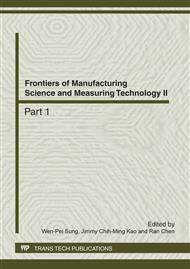p.597
p.601
p.606
p.611
p.615
p.620
p.625
p.629
p.633
Feasibility to Fabricate the 45° Slant with Anisotropic Silicon Etching in NaOH Solution
Abstract:
The experiments to study the feasibility to fabricate the 45 slant on p-type (100)-oriented silicon wafer were done. The various mask shapes, rectangular, cross, circle and boomerang, were patterned on the SiO2 mask by utilizing the conventional photolithography and dry etching process for investigating the anisotropic wet etch characteristic. The edge of masks were align in two crystal direction, 110 and 100 that is allowable to get a better understanding about the crystal orientation and the angle between planes in a crystal system. The very low etch rate, 50 nm/min, process regime was selected to fabricate the 45 slant with the concept is the lowest of an overall etch rate in the system to reach the level that is possible to detect the (110) plane. The etch recipe can be used for the next development work to built a housing of the laser light source for applying in a data storage technology.
Info:
Periodical:
Pages:
615-619
Citation:
Online since:
April 2012
Authors:
Keywords:
Price:
Сopyright:
© 2012 Trans Tech Publications Ltd. All Rights Reserved
Share:
Citation:


